Discover a diverse array of 20 flowers that start with F. From the classic Freesia to the exotic Fritillaria, learn about their characteristics, growing tips and how to incorporate them into your garden.
Welcome to our fascinating world of flowers that start with F! Whether you’re a seasoned gardener or just starting out, these blooms will add beauty and variety to your outdoor space. Let’s explore 20 different flowers, their unique features and how you can grow them. Get ready to discover the fantastic world of ‘F’ flowers!
1. Freesia
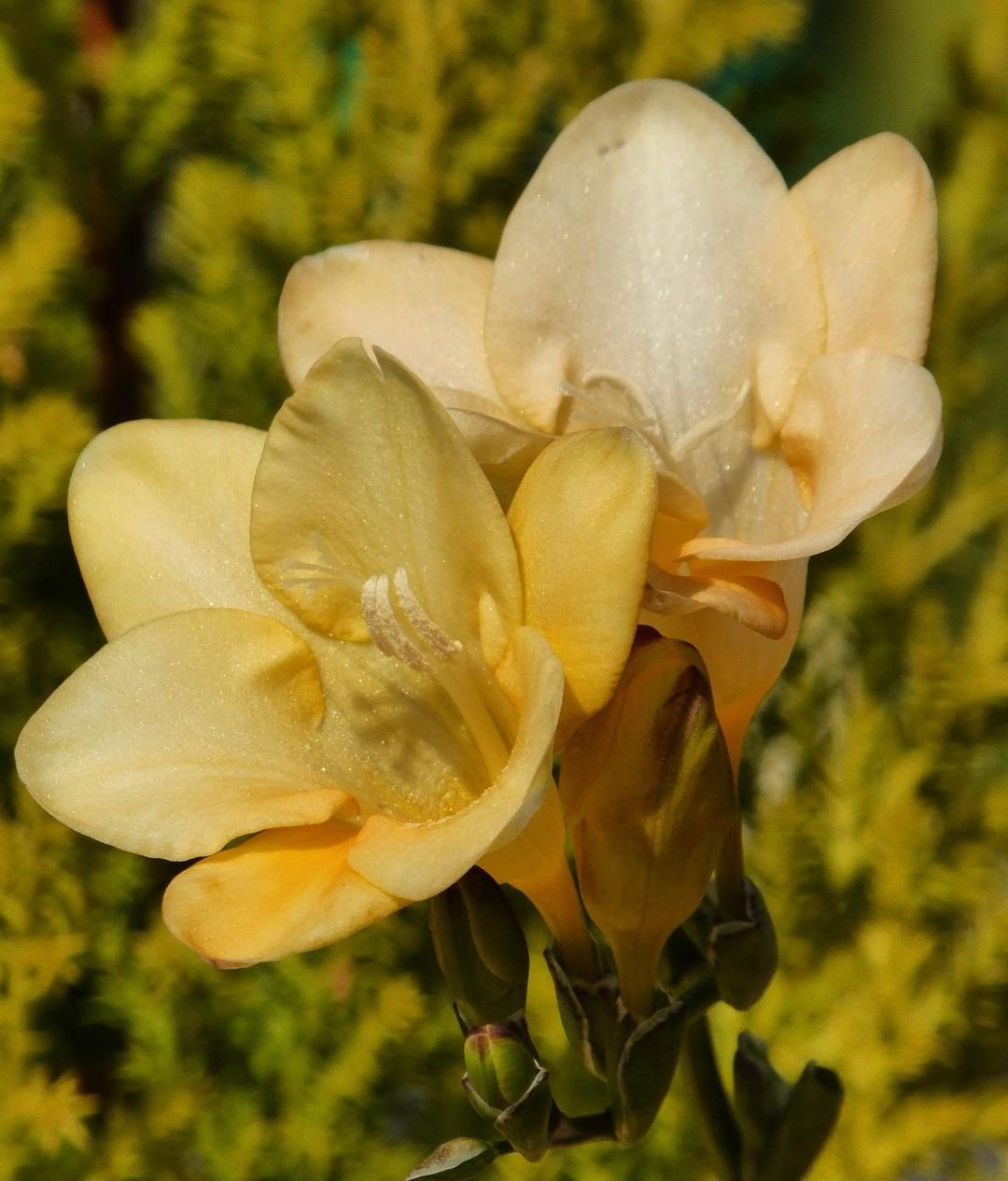
Here’s a comprehensive and easy-to-understand chart for Freesia:
| Attribute | Details |
|---|---|
| Botanical Name | Freesia spp. |
| Common Name | Freesia |
| Plant Zone | 9-11 (can be grown as an annual in cooler zones) |
| Sun Exposure | Full Sun to Partial Shade |
| Soil Type | Well-drained, sandy or loamy soil |
| Watering | Moderate, keep soil evenly moist during growth and flowering |
| Growth Habit | Clump-forming, upright |
| Height/Spread | 12-24 inches tall / 6-12 inches wide |
| Special Features | Fragrant flowers, attractive to pollinators, excellent cut flowers |
Freesias are known for their sweet fragrance and funnel-shaped flowers. They come in many colors, including white, yellow, pink and purple.
How to grow:
- Plant in full sun or partial shade
- Use well-draining soil
- Water regularly but don’t overwater
Freesias are popular in bouquets and gardens. They’re also used in perfumes because of their lovely scent. Learn more from North Carolina State Extension.
2. Forget-Me-Not
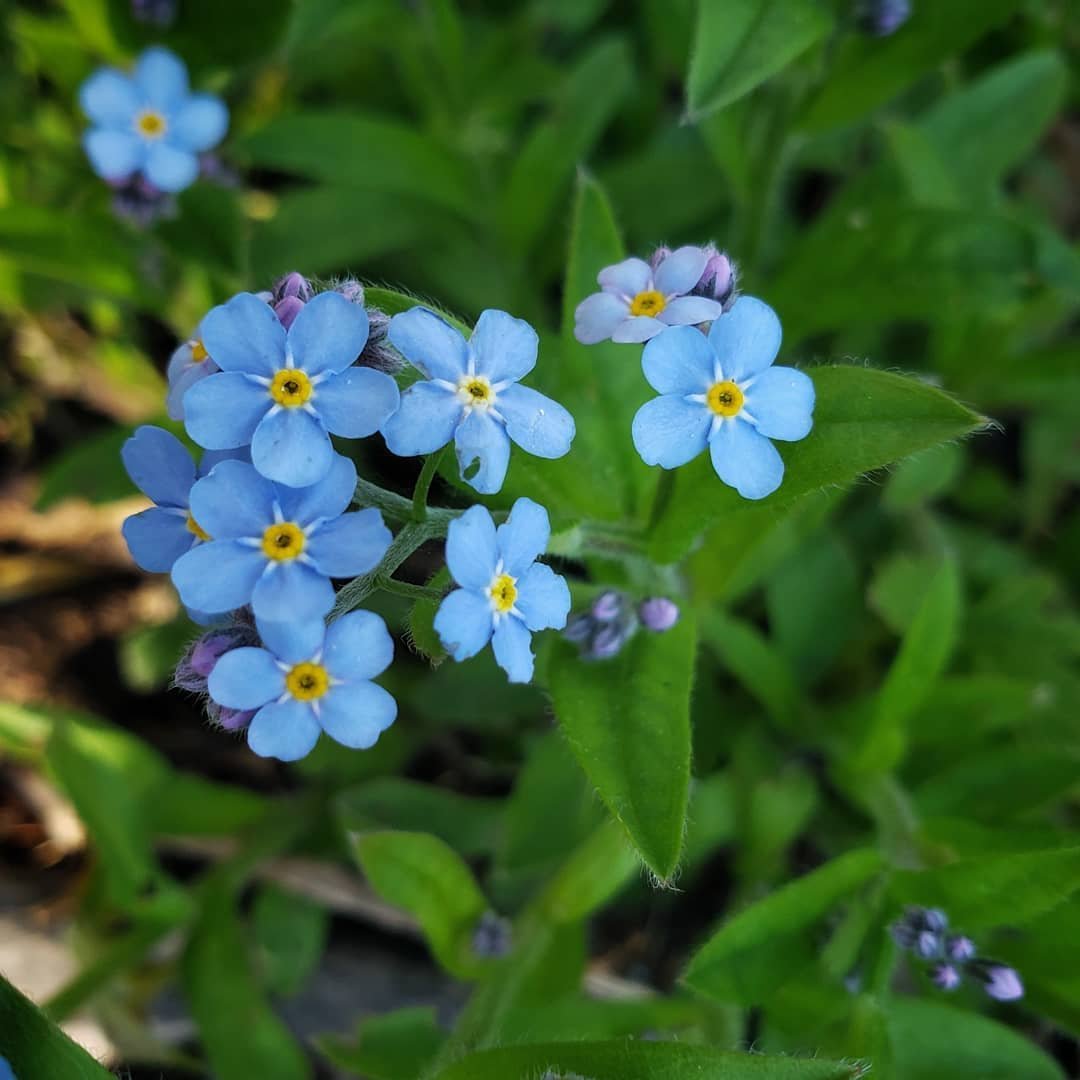
Here’s a comprehensive and easy-to-understand chart for Forget-Me-Not:
| Attribute | Details |
|---|---|
| Botanical Name | Myosotis sylvatica |
| Common Name | Forget-Me-Not |
| Plant Zone | 3-8 |
| Sun Exposure | Partial Shade to Full Shade |
| Soil Type | Moist, well-drained soil |
| Watering | Moderate, keep soil consistently moist |
| Growth Habit | Clump-forming, spreading |
| Height/Spread | 6-12 inches tall / 6-12 inches wide |
| Special Features | Attracts pollinators, self-seeding, deer-resistant |
Forget-Me-Nots have small, sky-blue flowers with yellow centers. They’re low-growing plants that bloom in spring.
How to grow:
- Plant in partial shade
- Keep soil moist but not soggy
- Allow to self-seed for more plants next year
Forget-Me-Nots are great for woodland gardens or as ground cover. They symbolize true love and memories.
3. Foxglove

Here’s a comprehensive and easy-to-understand chart for Foxglove:
| Attribute | Details |
|---|---|
| Botanical Name | Digitalis purpurea |
| Common Name | Foxglove |
| Plant Zone | 4-10 |
| Sun Exposure | Full Sun to Partial Shade |
| Soil Type | Well-drained, fertile, slightly acidic to neutral soil |
| Watering | Moderate, keep soil evenly moist |
| Growth Habit | Upright, biennial |
| Height/Spread | 2-5 feet tall / 1-2 feet wide |
| Special Features | Attracts pollinators, deer-resistant, poisonous if ingested |
Foxgloves have tall spikes of tubular flowers in shades of pink, purple, white or yellow. They’re loved by bees and hummingbirds.
How to grow:
- Plant in partial shade
- Use rich, well-draining soil
- Stake tall plants for support
Foxgloves are beautiful but be careful – all parts of the plant are poisonous if eaten. They’re often used in cottage gardens.
4. Fuchsia
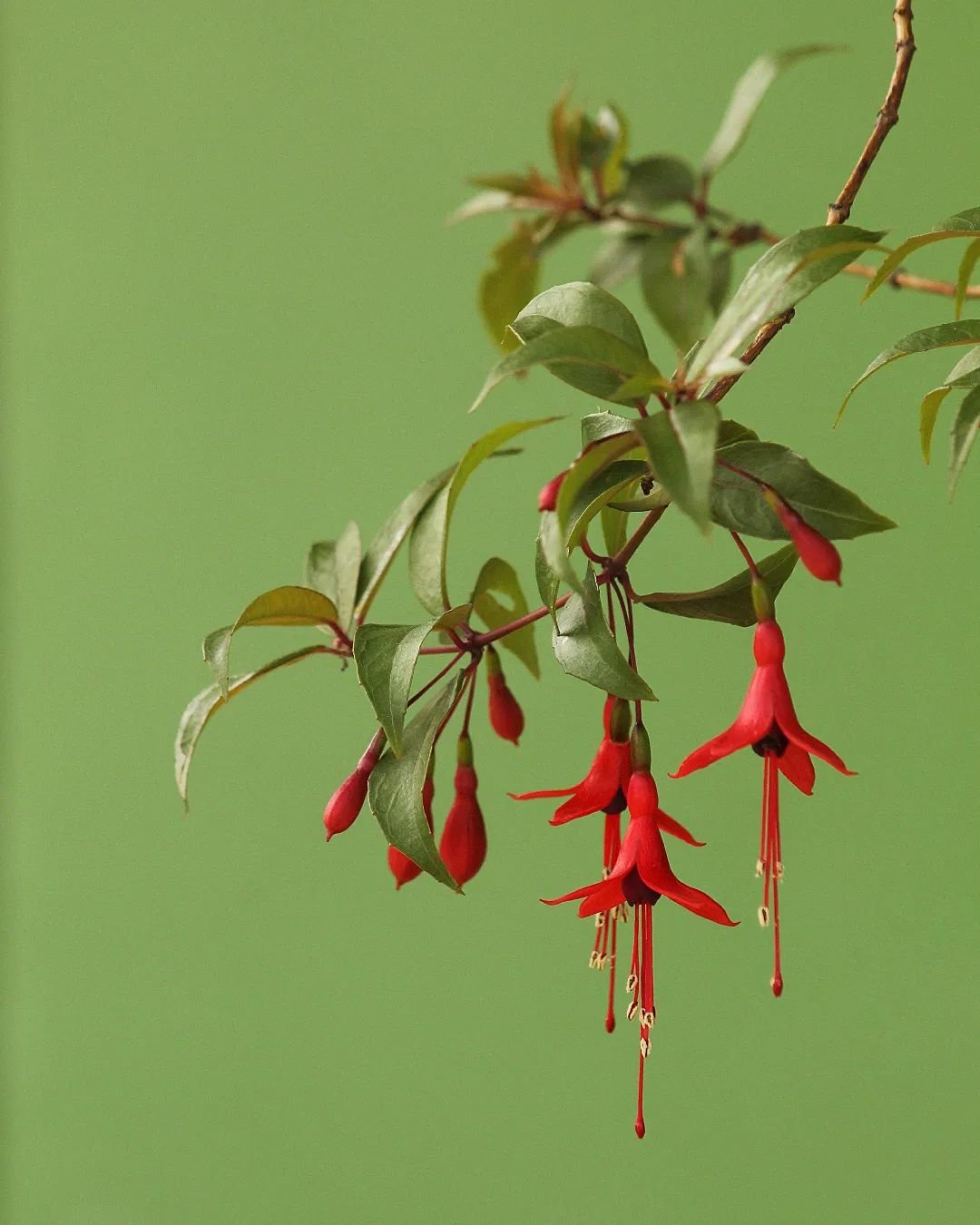
Here’s a comprehensive and easy-to-understand chart for Fuchsia:
| Attribute | Details |
|---|---|
| Botanical Name | Fuchsia spp. |
| Common Name | Fuchsia |
| Plant Zone | 9-11 (grown as an annual in cooler zones) |
| Sun Exposure | Partial Shade to Full Shade |
| Soil Type | Well-drained, fertile, humus-rich soil |
| Watering | Moderate to High, keep soil consistently moist but not waterlogged |
| Growth Habit | Bushy, trailing |
| Height/Spread | 1-3 feet tall / 1-2 feet wide |
| Special Features | Attractive to hummingbirds, excellent for hanging baskets, colorful flowers |
Fuchsias have unique, dangling flowers that look like little ballerinas. They come in combinations of pink, purple, red and white.
How to grow:
- Plant in partial shade
- Keep soil consistently moist
- Pinch back growing tips to encourage bushiness
Fuchsias are great for hanging baskets or as shrubs in mild climates. They attract hummingbirds.
5. Fennel
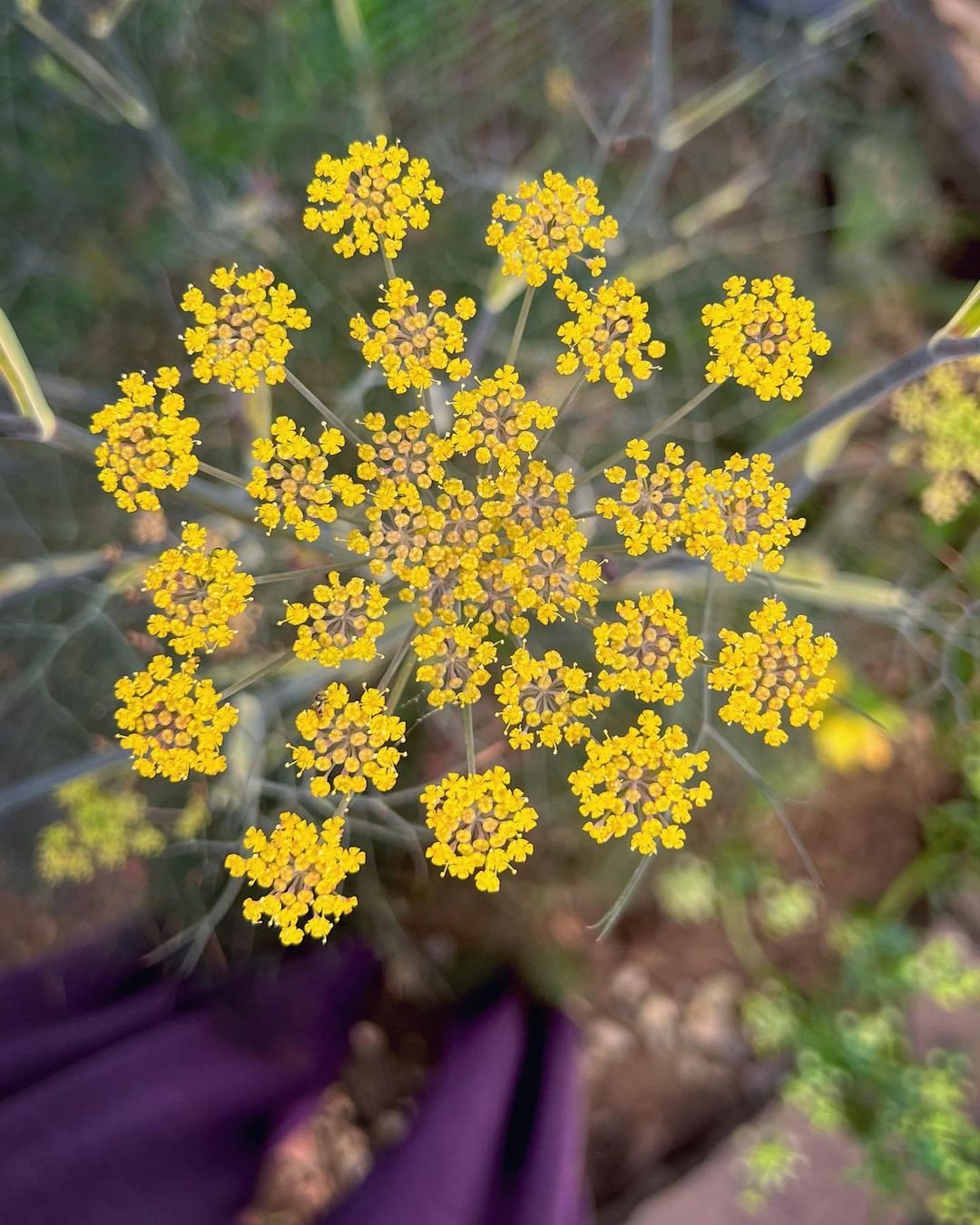
Here’s a comprehensive and easy-to-understand chart for Fennel:
| Attribute | Details |
|---|---|
| Botanical Name | Foeniculum vulgare |
| Common Name | Fennel |
| Plant Zone | 4-9 |
| Sun Exposure | Full Sun |
| Soil Type | Well-drained, fertile soil |
| Watering | Moderate, keep soil consistently moist |
| Growth Habit | Upright, bushy |
| Height/Spread | 3-6 feet tall / 1-2 feet wide |
| Special Features | Attracts pollinators, edible bulbs and leaves, aromatic, deer-resistant |
While fennel is mostly grown for its edible bulb and seeds, it also produces yellow flower clusters. These flowers are loved by beneficial insects.
How to grow:
- Plant in full sun
- Use well-draining soil
- Don’t overwater – fennel likes it on the dry side
Fennel is a great addition to herb gardens. Its flowers and seeds are used in cooking. Learn more from University of Illinois Extension.
6. Four O’Clock
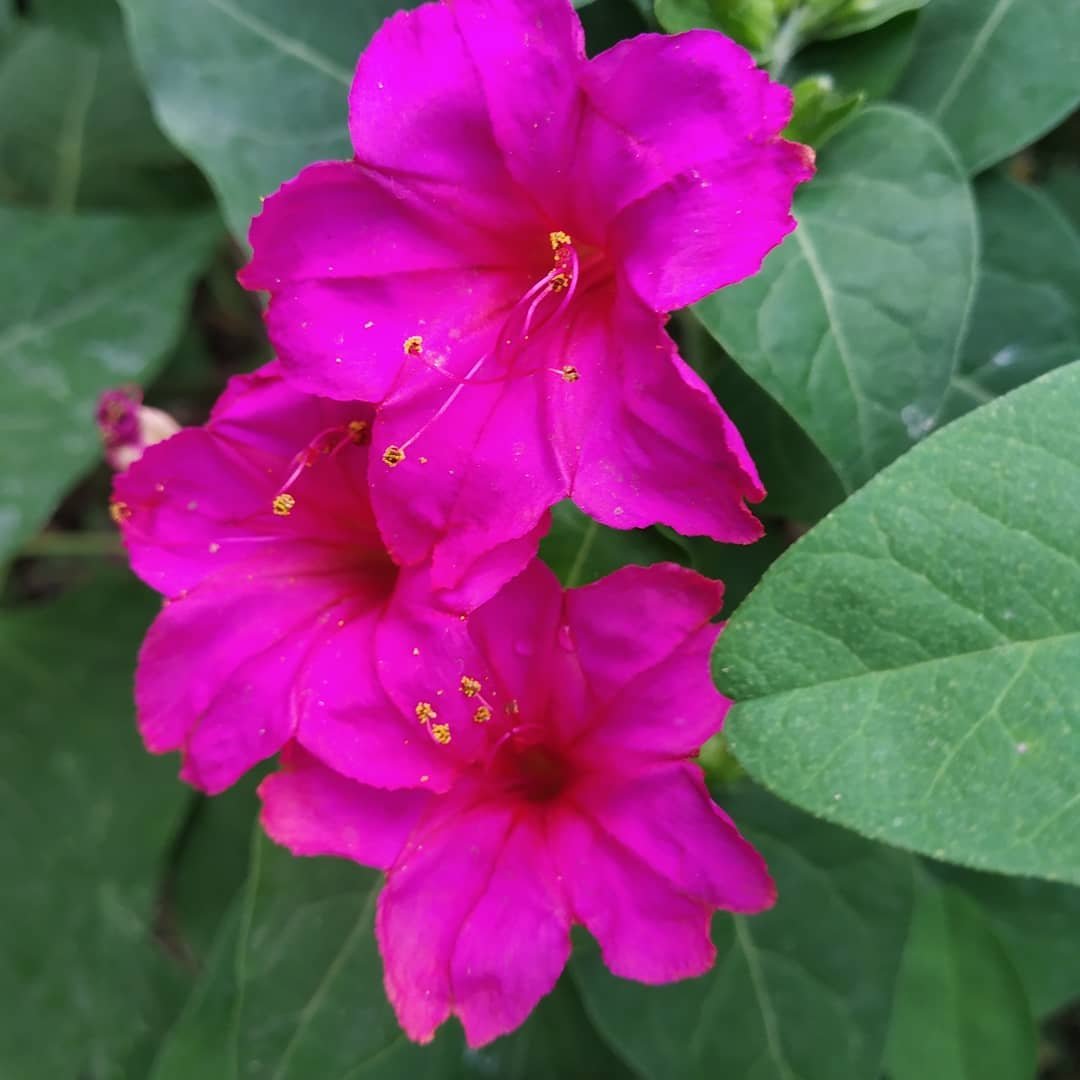
Here’s a comprehensive and easy-to-understand chart for Four O’Clock:
| Attribute | Details |
|---|---|
| Botanical Name | Mirabilis jalapa |
| Common Name | Four O’Clock, Marvel of Peru |
| Plant Zone | 7-10 (grown as an annual in cooler zones) |
| Sun Exposure | Full Sun to Partial Shade |
| Soil Type | Well-drained, average soil |
| Watering | Moderate, drought-tolerant once established |
| Growth Habit | Bushy, spreading |
| Height/Spread | 2-3 feet tall / 2-3 feet wide |
| Special Features | Fragrant flowers, blooms in late afternoon, attracts pollinators, easy to grow |
Four O’Clocks have trumpet-shaped flowers that open in late afternoon. They come in many colors and have a sweet fragrance.
How to grow:
- Plant in full sun or partial shade
- Use well-draining soil
- Water regularly during dry spells
Four O’Clocks are easy to grow from seed. They’re great for butterfly gardens and bloom all summer long.
7. Flax
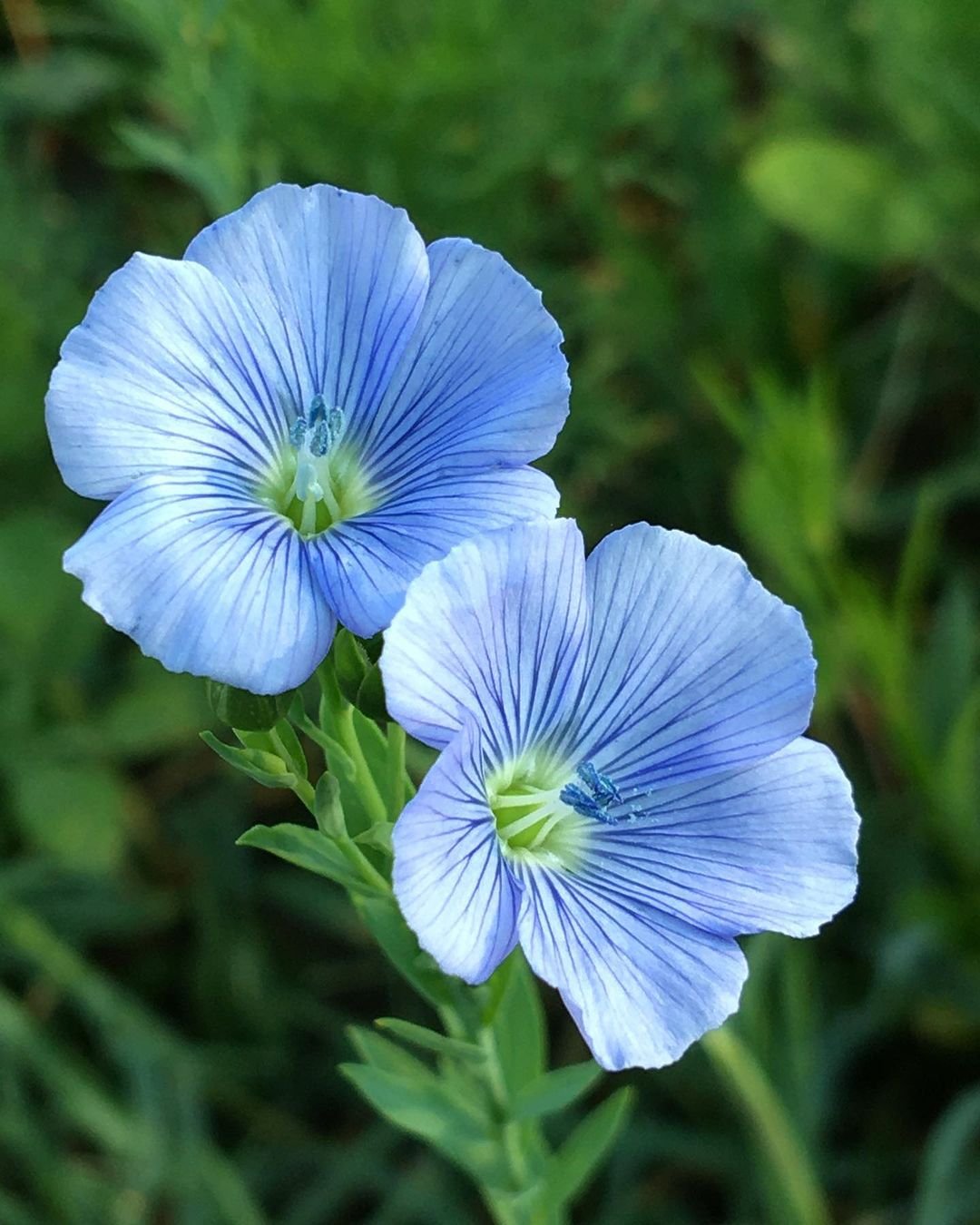
Here’s a comprehensive and easy-to-understand chart for Flax:
| Attribute | Details |
|---|---|
| Botanical Name | Linum usitatissimum |
| Common Name | Flax, Common Flax |
| Plant Zone | 5-9 |
| Sun Exposure | Full Sun |
| Soil Type | Well-drained, sandy or loamy soil |
| Watering | Moderate, keep soil evenly moist |
| Growth Habit | Upright, clump-forming |
| Height/Spread | 1-2 feet tall / 1-1.5 feet wide |
| Special Features | Edible seeds and oil, attractive flowers, drought-tolerant once established |
Flax has delicate blue or white flowers on thin stems. They bloom for a long time in summer.
How to grow:
- Plant in full sun
- Use well-draining soil
- Sow seeds directly in the garden – they don’t transplant well
Flax is easy to grow and adds a light, airy look to gardens. Some types are grown for their seeds or fiber.
8. Feverfew
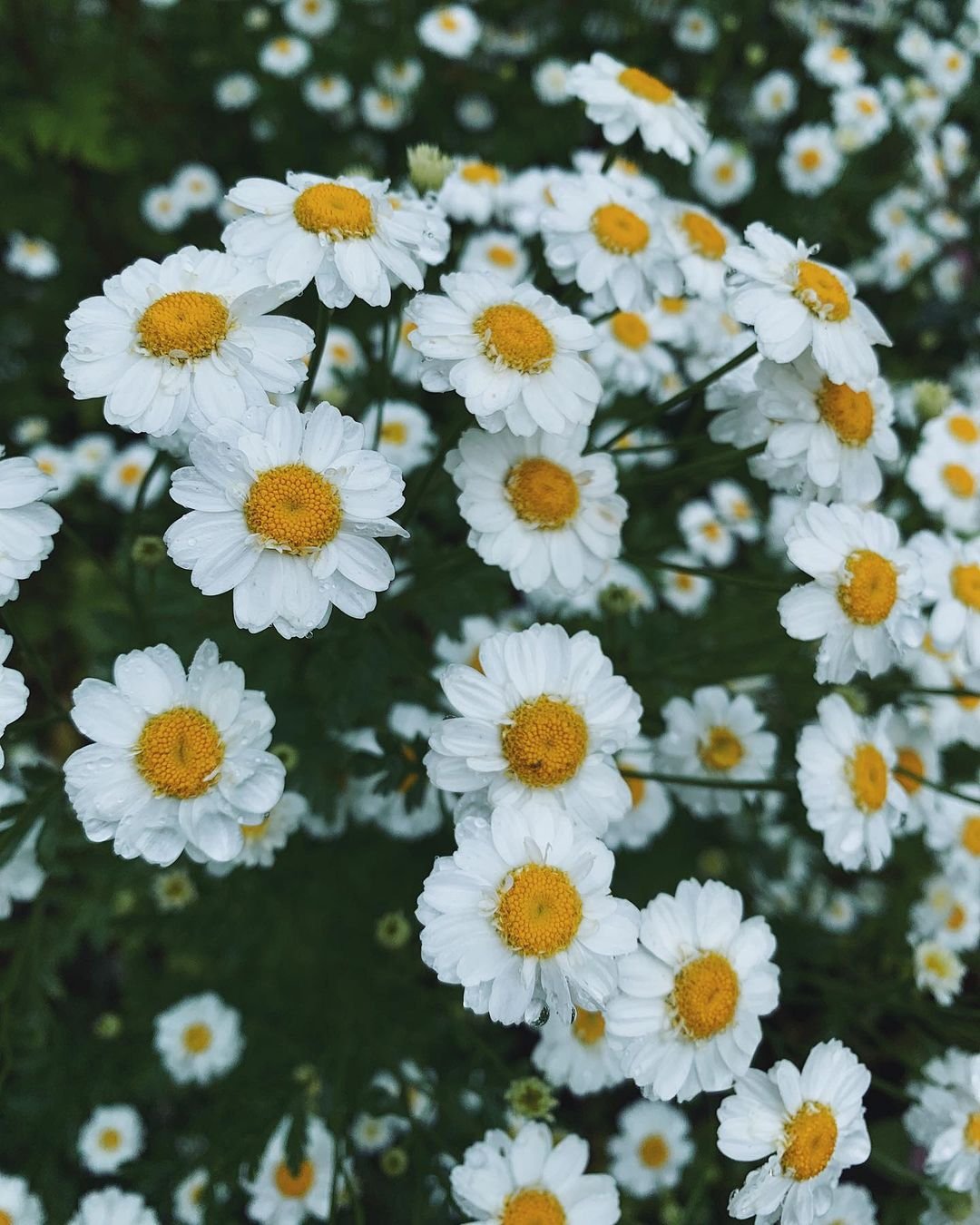
Here’s a comprehensive and easy-to-understand chart for Feverfew:
| Attribute | Details |
|---|---|
| Botanical Name | Tanacetum parthenium |
| Common Name | Feverfew |
| Plant Zone | 5-9 |
| Sun Exposure | Full Sun to Partial Shade |
| Soil Type | Well-drained, average soil |
| Watering | Moderate, keep soil evenly moist |
| Growth Habit | Bushy, upright |
| Height/Spread | 1-3 feet tall / 1-2 feet wide |
| Special Features | Attracts pollinators, medicinal properties, deer-resistant |
Feverfew has small, daisy-like flowers with white petals and yellow centers. It’s known for its medicinal properties.
How to grow:
- Plant in full sun or partial shade
- Use well-draining soil
- Deadhead to encourage more blooms
Feverfew is easy to grow and self-seeds readily. It’s often used in herb gardens.
9. Fritillaria
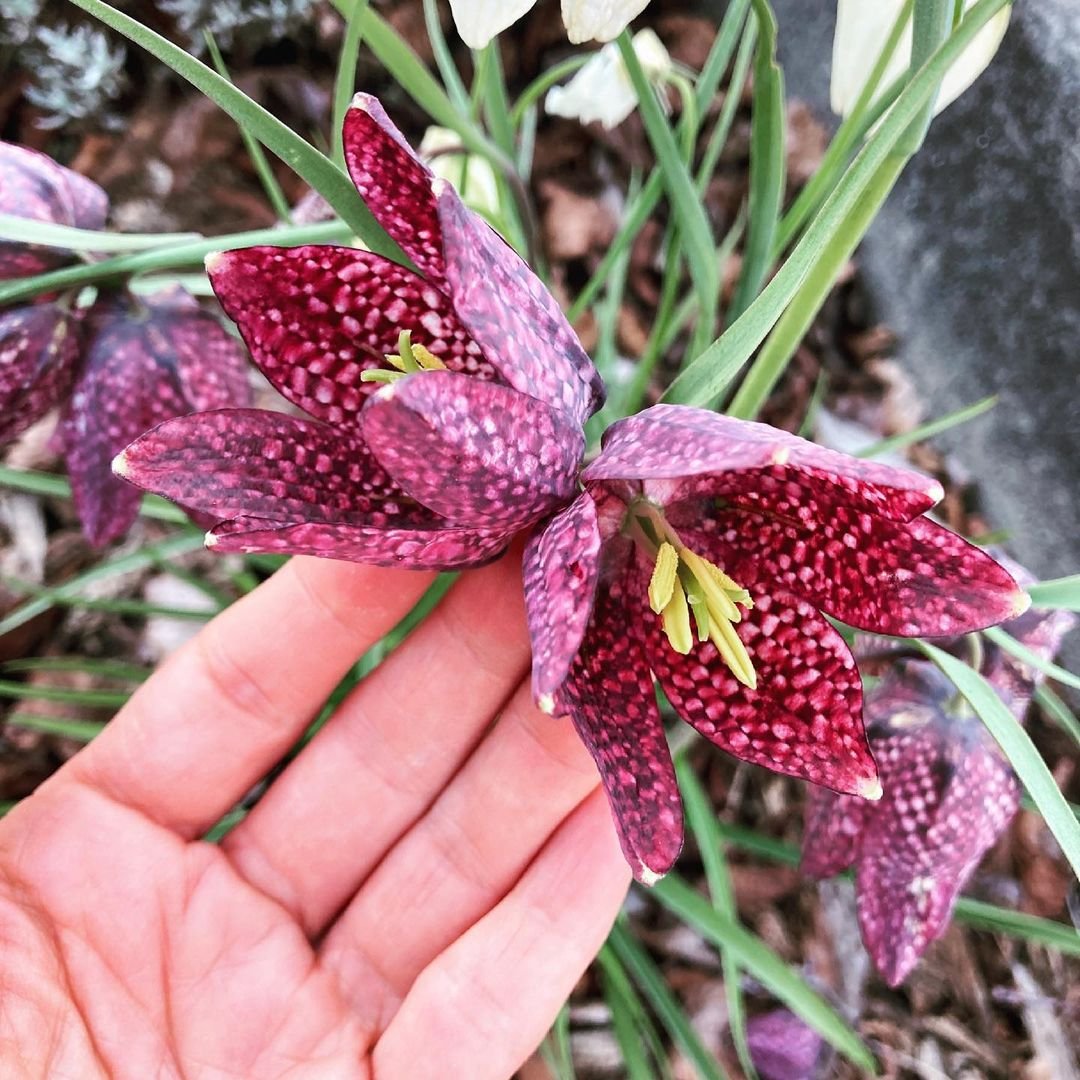
Here’s a comprehensive and easy-to-understand chart for Fritillaria:
| Attribute | Details |
|---|---|
| Botanical Name | Fritillaria spp. |
| Common Name | Fritillaria, Crown Imperial |
| Plant Zone | 4-8 |
| Sun Exposure | Full Sun to Partial Shade |
| Soil Type | Well-drained, fertile soil |
| Watering | Moderate, keep soil evenly moist but not waterlogged |
| Growth Habit | Upright, bulbous |
| Height/Spread | 1-3 feet tall / 6-12 inches wide |
| Special Features | Unique, bell-shaped flowers, deer-resistant, attracts pollinators, some species are fragrant |
Fritillarias have unique, bell-shaped flowers that often have checkered patterns. They come in various colors, including purple, orange and white.
How to grow:
- Plant bulbs in fall
- Choose a spot with partial shade
- Use well-draining soil
Fritillarias are unusual and exotic-looking flowers. They’re great for adding interest to spring gardens.
10. Flowering Dogwood
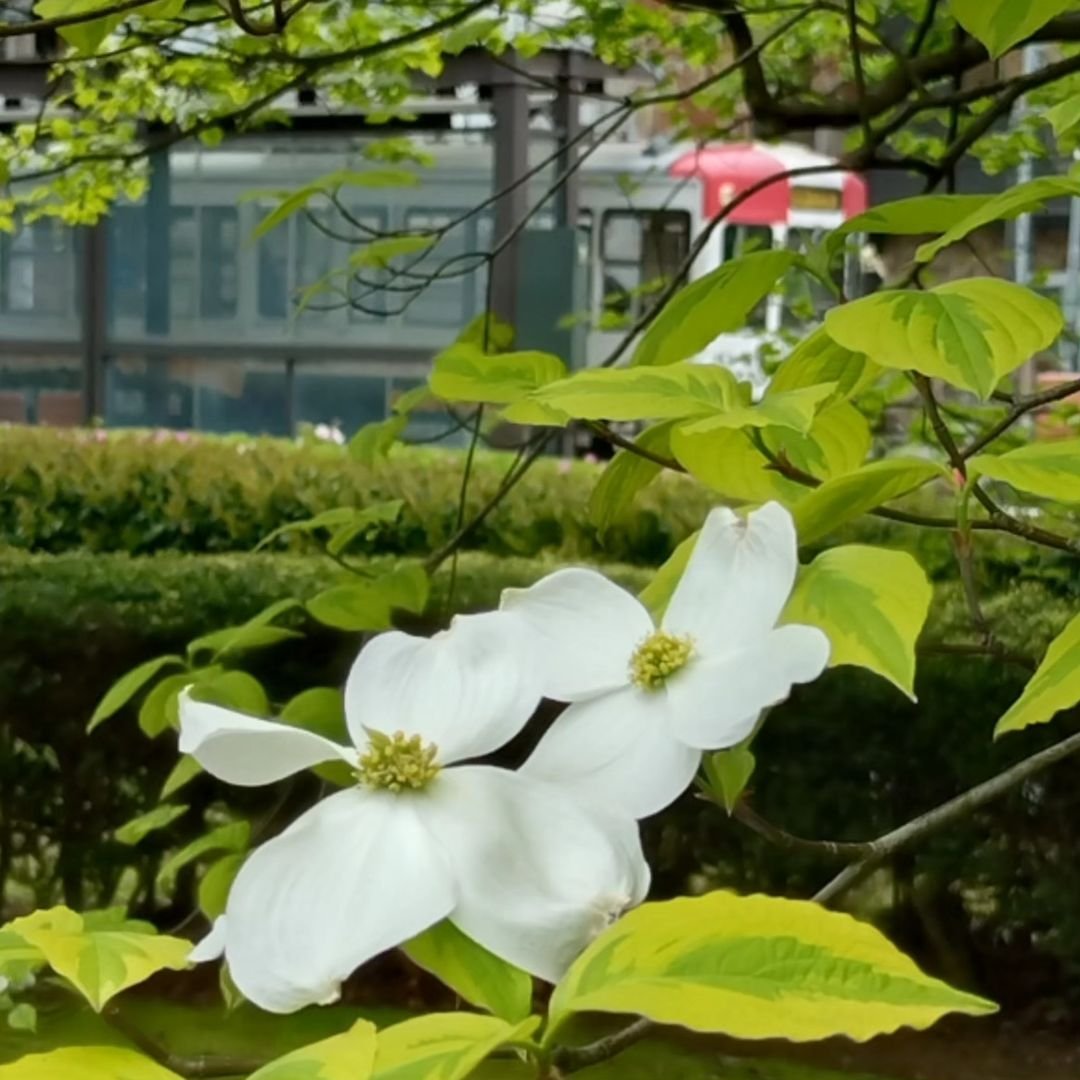
Here’s a comprehensive and easy-to-understand chart for Flowering Dogwood:
| Attribute | Details |
|---|---|
| Botanical Name | Cornus florida |
| Common Name | Flowering Dogwood |
| Plant Zone | 5-9 |
| Sun Exposure | Partial Shade to Full Sun |
| Soil Type | Well-drained, acidic, moist soil |
| Watering | Moderate, keep soil consistently moist |
| Growth Habit | Deciduous, spreading |
| Height/Spread | 15-30 feet tall / 15-30 feet wide |
| Special Features | Showy flowers, attractive fall foliage, red berries that attract birds, disease-resistant varieties available |
Flowering Dogwoods are small trees with showy white or pink bracts that look like flower petals. They bloom in spring.
How to grow:
- Plant in full sun or partial shade
- Use rich, well-draining soil
- Water deeply and regularly when young
Dogwoods are beautiful landscape trees. They provide spring flowers, summer shade and fall color. Learn more from Clemson Cooperative Extension.
11. Fleabane
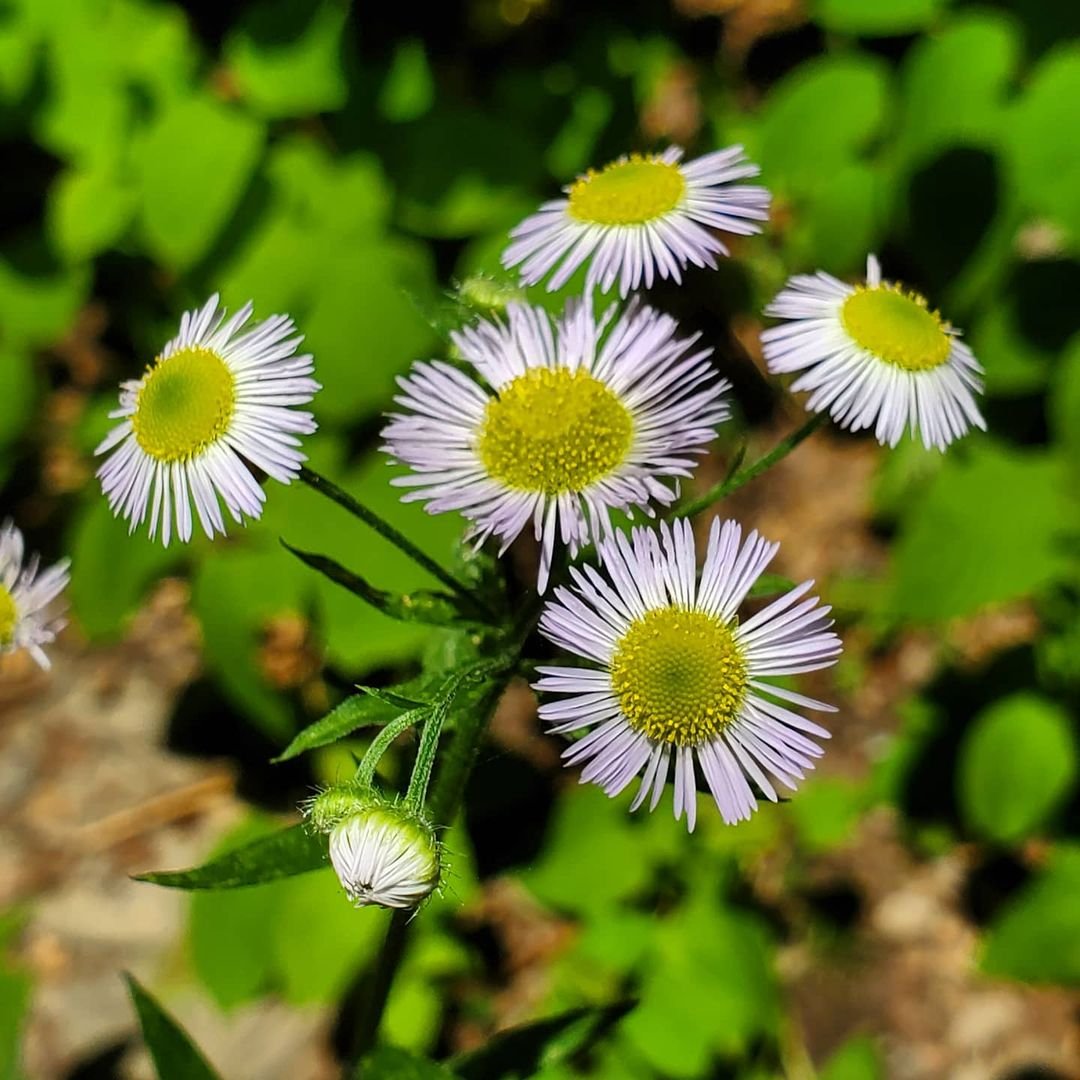
Here’s a comprehensive and easy-to-understand chart for Fleabane:
| Attribute | Details |
|---|---|
| Botanical Name | Erigeron spp. |
| Common Name | Fleabane |
| Plant Zone | 3-9 |
| Sun Exposure | Full Sun to Partial Shade |
| Soil Type | Well-drained soil |
| Watering | Low to Moderate, drought-tolerant once established |
| Growth Habit | Upright, spreading |
| Height/Spread | 6 inches to 3 feet tall / 6 inches to 2 feet wide |
| Special Features | Profuse daisy-like flowers, attracts pollinators, deer-resistant |
Fleabane has small, daisy-like flowers in white, pink or lavender. They bloom for a long time in summer.
How to grow:
- Plant in full sun or partial shade
- Use well-draining soil
- Deadhead to encourage more blooms
Fleabane is great for cottage gardens or wildflower meadows. It’s easy to grow and attracts butterflies.
12. Flamingo Flower (Anthurium)
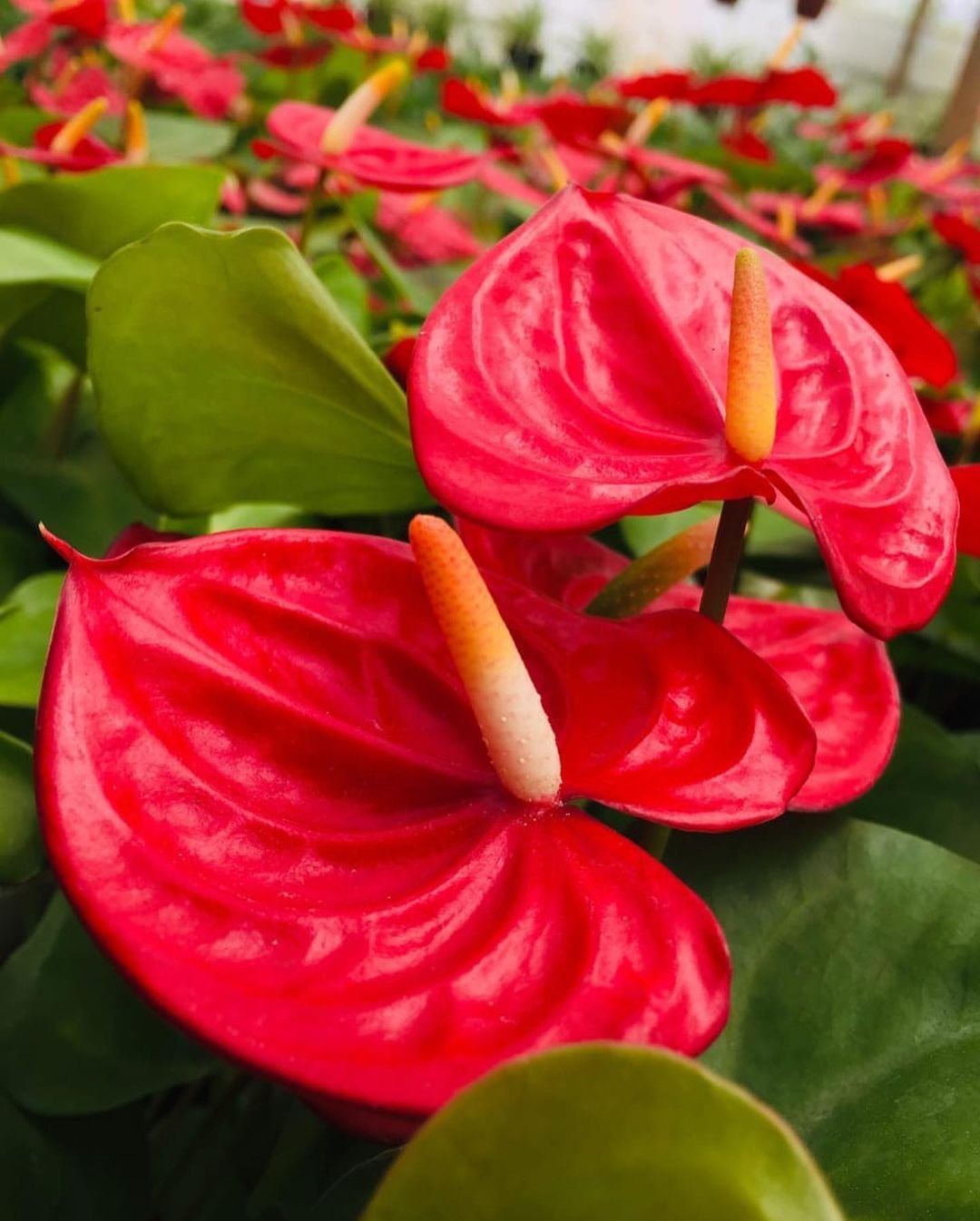
Here’s a comprehensive and easy-to-understand chart for Flamingo Flower:
| Attribute | Details |
|---|---|
| Botanical Name | Anthurium andraeanum |
| Common Name | Flamingo Flower, Laceleaf |
| Plant Zone | 10-12 (typically grown as indoor plants) |
| Sun Exposure | Bright, indirect light |
| Soil Type | Well-draining, peat-based mix |
| Watering | Regular, keep soil evenly moist |
| Growth Habit | Upright, clumping |
| Height/Spread | 1-2 feet tall / 1-2 feet wide |
| Special Features | Glossy, heart-shaped flowers (spathes), long-lasting blooms, air-purifying |
Flamingo Flowers have shiny, heart-shaped bracts in red, pink or white. They’re often grown as houseplants.
How to grow:
- Keep in bright, indirect light
- Use well-draining potting mix
- Keep humidity high
Flamingo Flowers are great for adding tropical flair to indoor spaces. They can bloom year-round with proper care.
13. Foxtail Lily
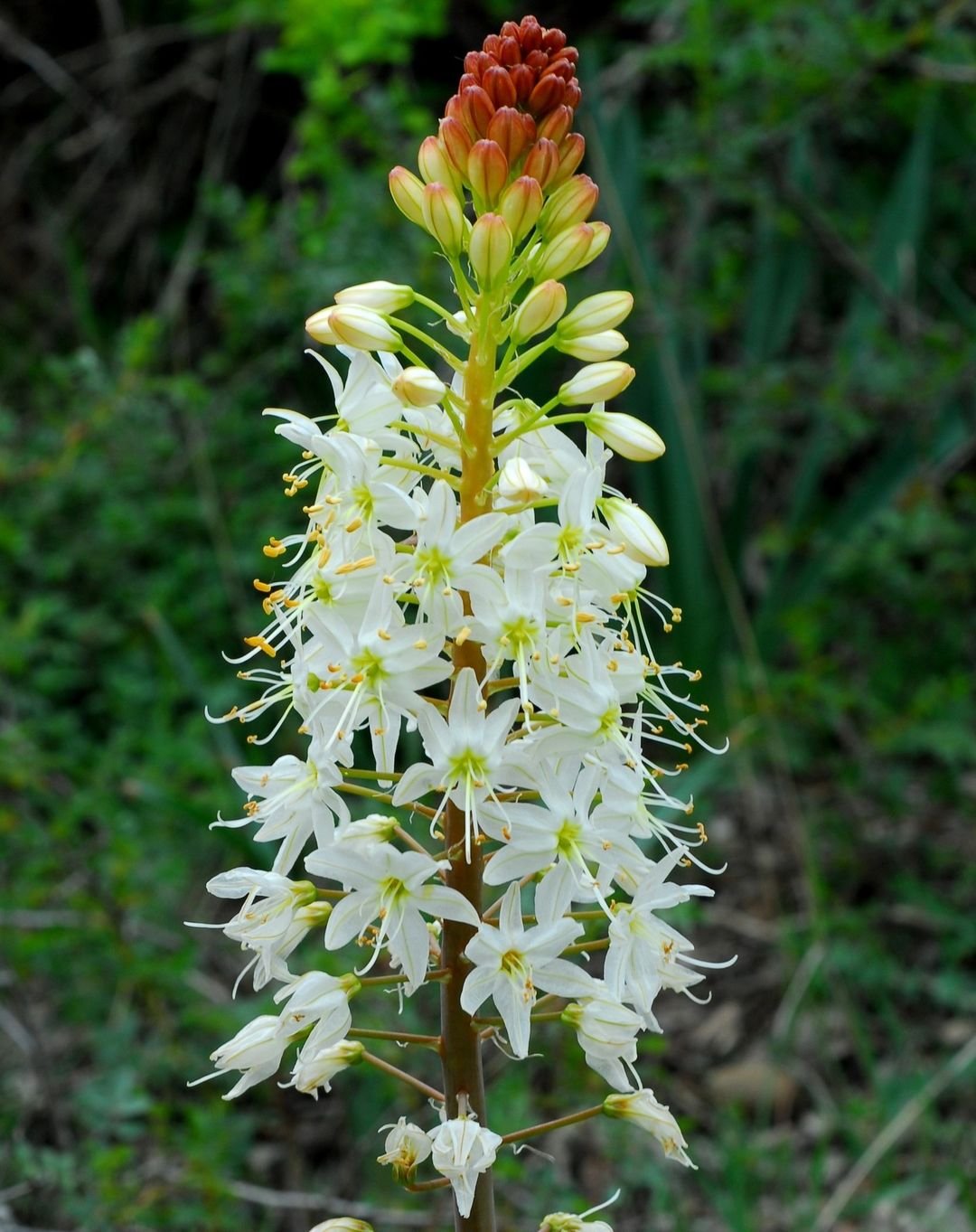
Here’s a comprehensive and easy-to-understand chart for Foxtail Lily:
| Attribute | Details |
|---|---|
| Botanical Name | Eremurus spp. |
| Common Name | Foxtail Lily, Desert Candle |
| Plant Zone | 5-9 |
| Sun Exposure | Full Sun |
| Soil Type | Well-drained, sandy soil |
| Watering | Low to moderate, avoid waterlogged conditions |
| Growth Habit | Clump-forming, upright |
| Height/Spread | 3-6 feet tall / 1-2 feet wide |
| Special Features | Spiky, densely packed flowers, attracts pollinators, drought-tolerant |
Foxtail Lilies have tall spikes of small, star-shaped flowers. They can grow up to 10 feet tall!
How to grow:
- Plant in full sun
- Use well-draining soil
- Don’t disturb once planted – they have fragile roots
Foxtail Lilies are great for adding height to the back of borders. They make dramatic cut flowers.
14. Flowering Tobacco (Nicotiana)
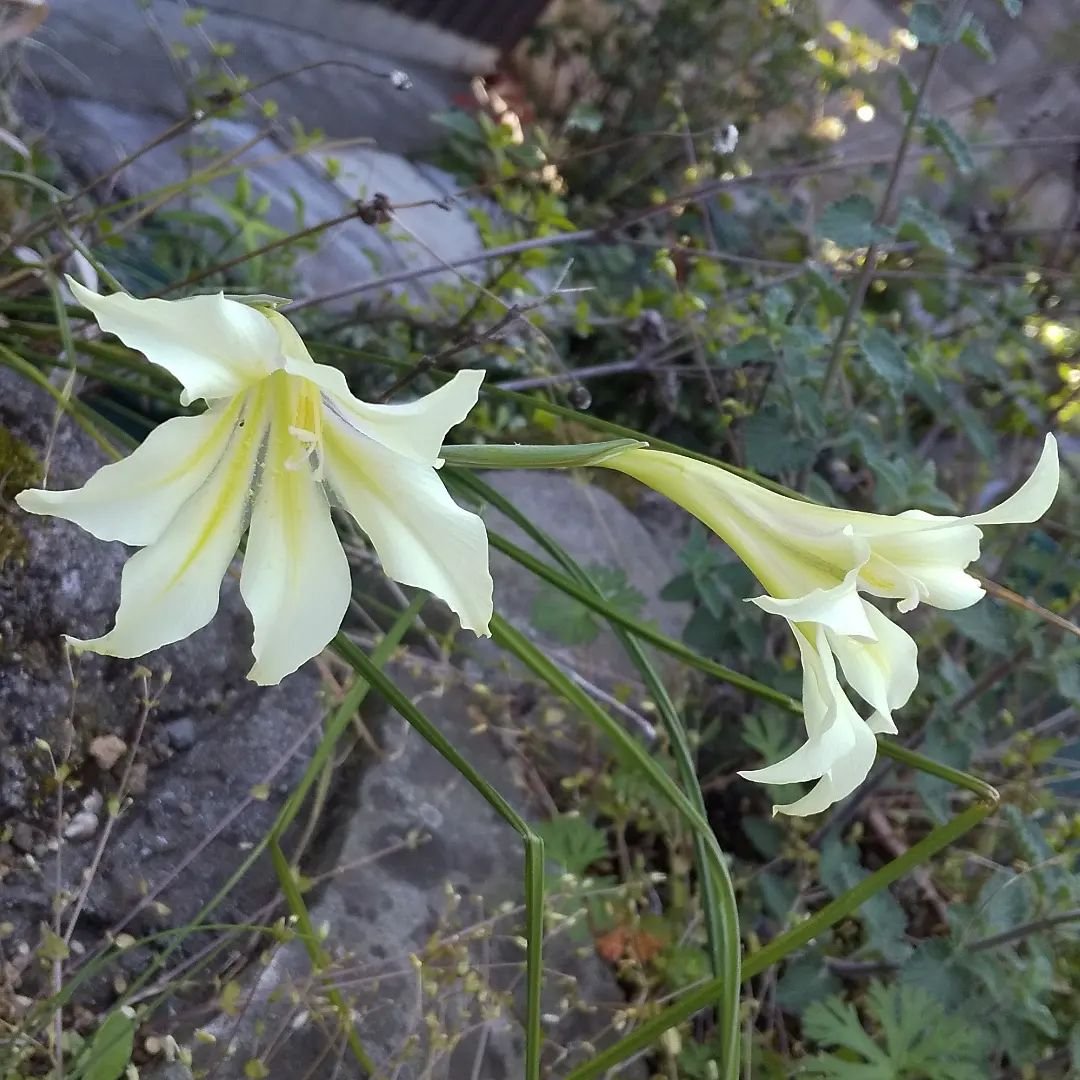
Here’s a comprehensive and easy-to-understand chart for Flowering Tobacco:
| Attribute | Details |
|---|---|
| Botanical Name | Nicotiana alata |
| Common Name | Flowering Tobacco, Nicotiana |
| Plant Zone | 10-11 (usually grown as an annual) |
| Sun Exposure | Full Sun to Partial Shade |
| Soil Type | Well-drained, fertile soil |
| Watering | Moderate, keep soil evenly moist |
| Growth Habit | Upright, bushy |
| Height/Spread | 1-5 feet tall / 1-2 feet wide |
| Special Features | Fragrant flowers, attracts pollinators, deer-resistant, self-seeding |
Flowering Tobacco has trumpet-shaped flowers that open in the evening. They have a sweet fragrance that attracts night-flying moths.
How to grow:
- Plant in full sun or partial shade
- Use rich, well-draining soil
- Water regularly during dry spells
Flowering Tobacco is great for moon gardens or near patios where you can enjoy their evening fragrance.
15. Flowering Quince
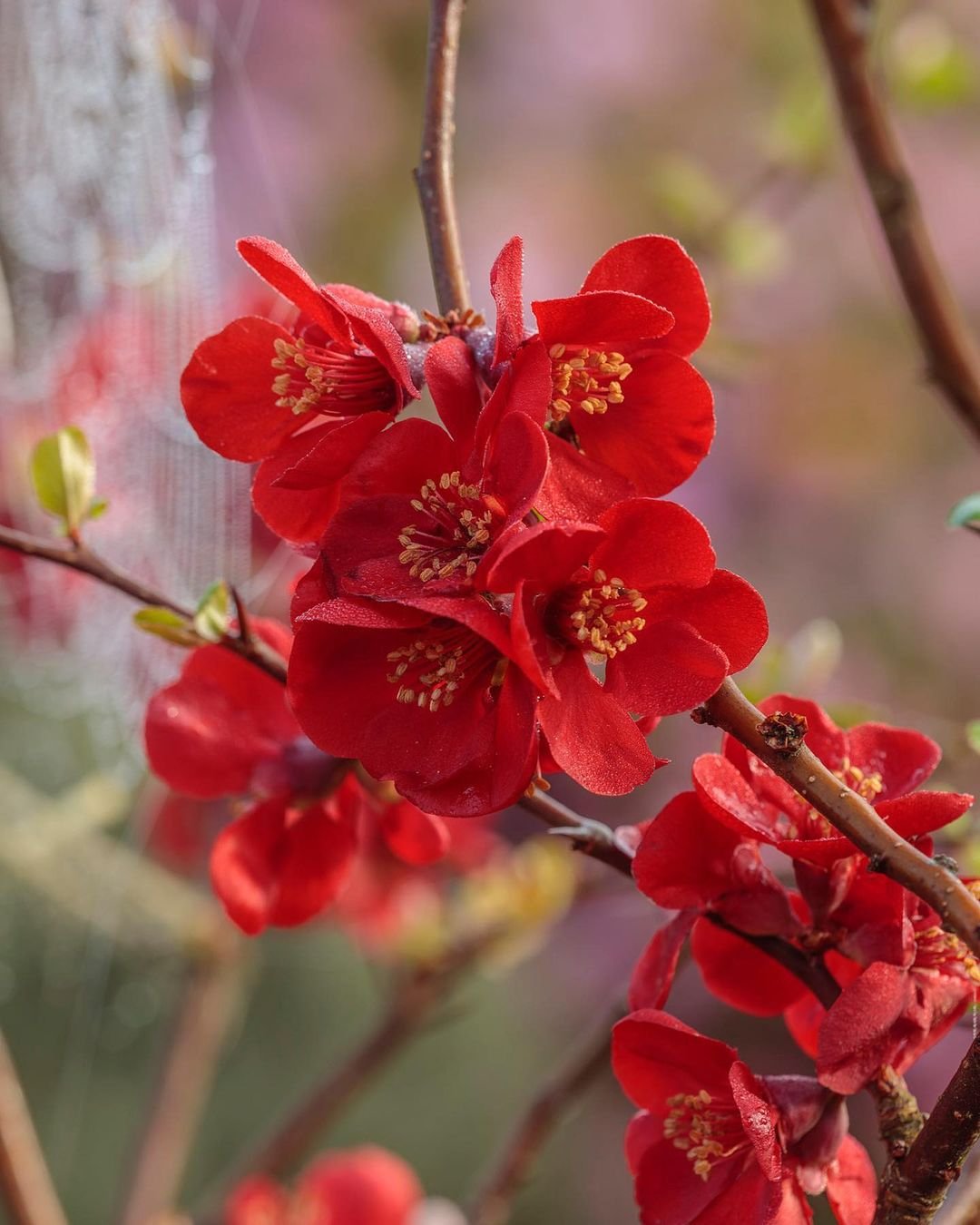
Here’s a comprehensive and easy-to-understand chart for Flowering Quince:
| Attribute | Details |
|---|---|
| Botanical Name | Chaenomeles spp. |
| Common Name | Flowering Quince |
| Plant Zone | 5-9 |
| Sun Exposure | Full Sun to Partial Shade |
| Soil Type | Well-drained, fertile soil |
| Watering | Moderate, drought-tolerant once established |
| Growth Habit | Deciduous shrub |
| Height/Spread | 3-10 feet tall / 3-10 feet wide |
| Special Features | Early spring blooms, attracts pollinators, fruit used for jams and jellies, thorny branches |
Flowering Quince is a shrub with bright red, pink or white flowers that bloom in early spring.
How to grow:
- Plant in full sun or partial shade
- Use well-draining soil
- Prune after flowering to maintain shape
Flowering Quince is great for early spring color. It’s also used in bonsai. Learn more from Missouri Botanical Garden.
16. Frangipani

Here’s an easy-to-understand chart for Frangipani:
| Attribute | Details |
|---|---|
| Botanical Name | Plumeria spp. |
| Common Name | Frangipani, Plumeria |
| Plant Zone | 10-12 (typically grown in tropical and subtropical regions) |
| Sun Exposure | Full Sun to Partial Shade |
| Soil Type | Well-drained, sandy soil |
| Watering | Moderate, allow soil to dry slightly between waterings |
| Growth Habit | Small tree or shrub |
| Height/Spread | 10-25 feet tall / 6-15 feet wide |
| Special Features | Fragrant flowers, attracts butterflies, drought-tolerant once established, used in leis and perfumes |
Frangipani has fragrant flowers with five waxy petals. They come in shades of white, yellow, pink and red.
How to grow:
- Plant in full sun
- Use well-draining soil
- Don’t overwater – they’re drought-tolerant
Frangipani is a tropical plant often associated with Hawaii. It’s used to make leis and has a wonderful fragrance.
17. Floss Flower (Ageratum)
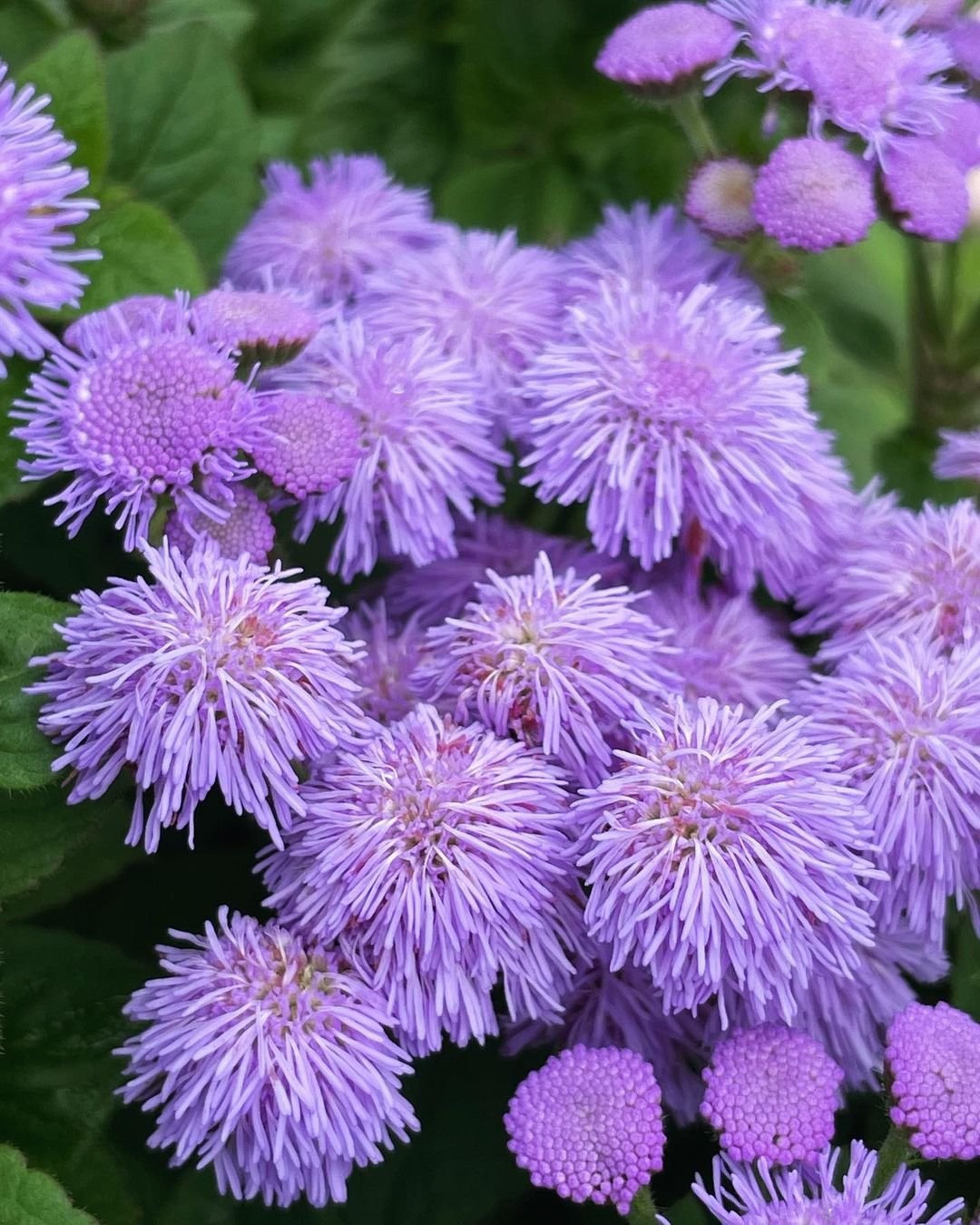
Here’s an easy-to-understand chart for Floss Flower:
| Attribute | Details |
|---|---|
| Botanical Name | Ageratum houstonianum |
| Common Name | Floss Flower |
| Plant Zone | 2-11 (grown as an annual in colder zones) |
| Sun Exposure | Full Sun to Partial Shade |
| Soil Type | Well-drained, fertile soil |
| Watering | Moderate, keep soil evenly moist |
| Growth Habit | Upright, bushy |
| Height/Spread | 6-18 inches tall / 6-12 inches wide |
| Special Features | Profuse blue, pink or white fluffy flowers, attracts butterflies, deer-resistant |
Floss Flower has small, fluffy flowers in shades of blue, pink or white. They bloom all summer long.
How to grow:
- Plant in full sun or partial shade
- Use rich, well-draining soil
- Water regularly to keep soil moist
Floss Flowers are great for borders or containers. They attract butterflies and are easy to grow from seed.
18. False Indigo
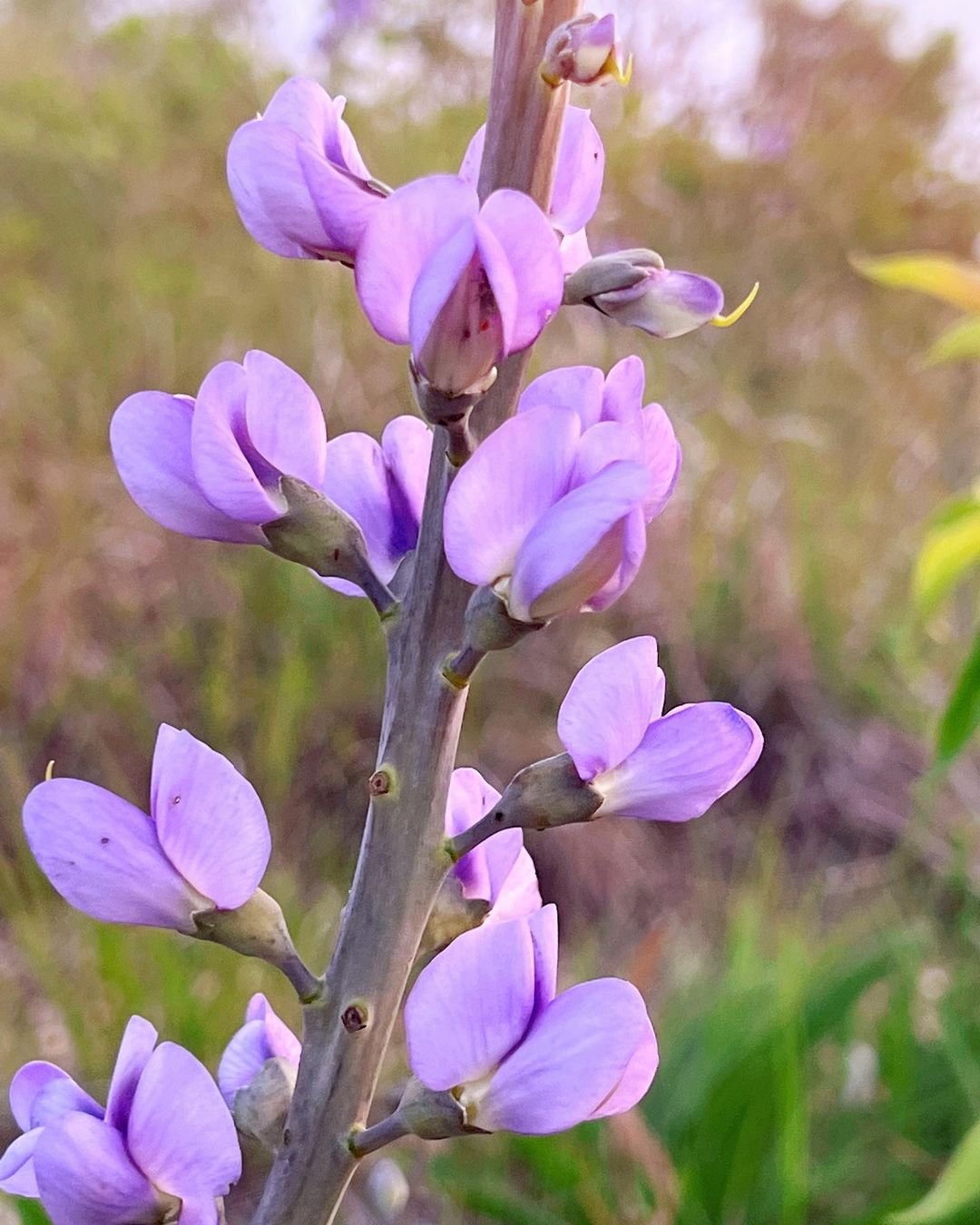
Here’s an easy-to-understand chart for False Indigo:
| Attribute | Details |
|---|---|
| Botanical Name | Baptisia spp. |
| Common Name | False Indigo |
| Plant Zone | 3-9 |
| Sun Exposure | Full Sun to Partial Shade |
| Soil Type | Well-drained, average soil |
| Watering | Low to moderate |
| Growth Habit | Herbaceous perennial |
| Height/Spread | 3-4 feet tall / 2-3 feet wide |
| Special Features | Pea-like flowers in spring, attracts pollinators, deer-resistant, drought-tolerant once established |
False Indigo has spikes of pea-like flowers in blue, purple, white or yellow. It’s a native plant that’s great for wildlife gardens.
How to grow:
- Plant in full sun or partial shade
- Use well-draining soil
- Don’t disturb once planted – they have deep roots
False Indigo is drought-tolerant once established. It’s a long-lived perennial that gets better with age.
19. Fiddleneck
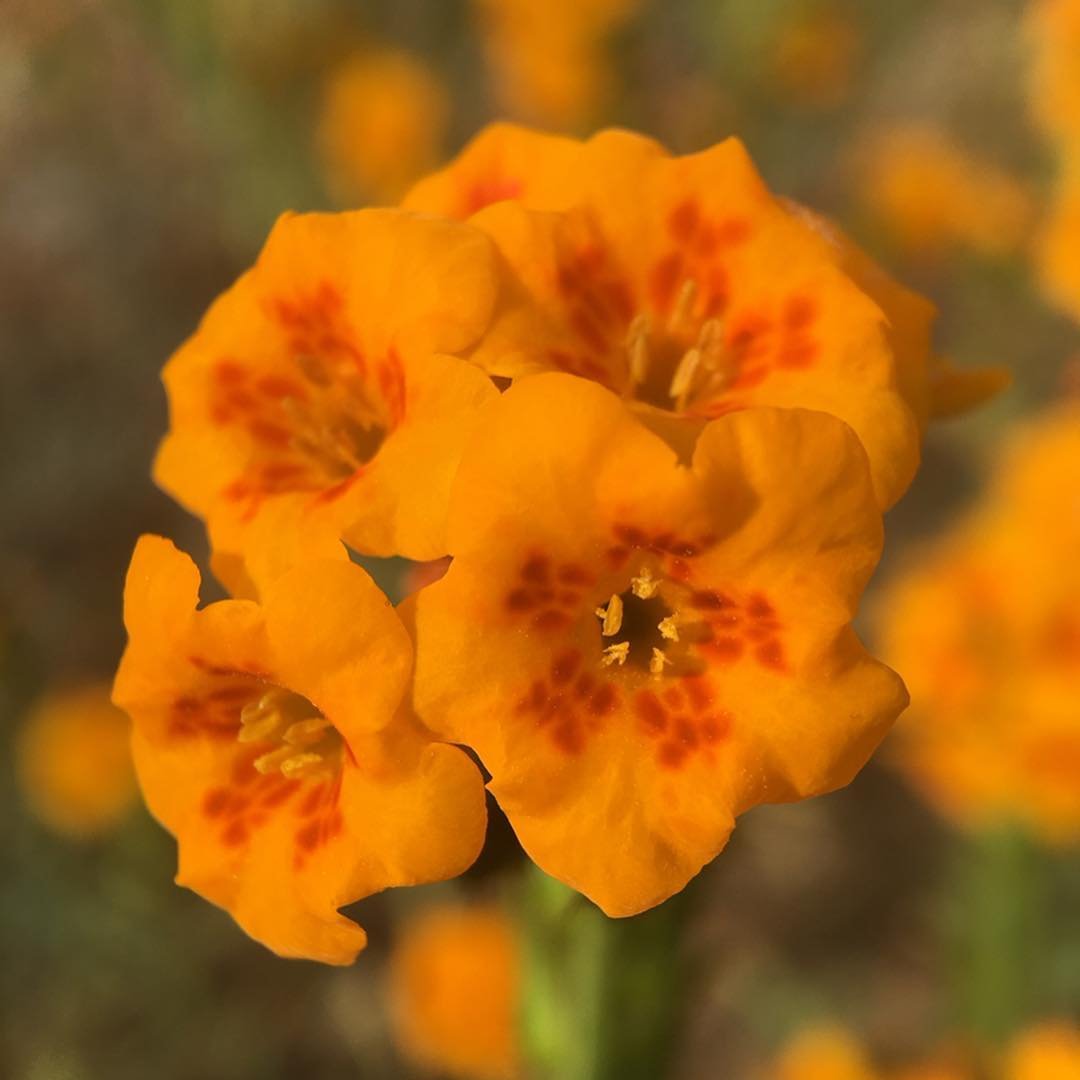
Here’s an easy-to-understand chart for Fiddleneck:
| Attribute | Details |
|---|---|
| Botanical Name | Amsinckia spp. |
| Common Name | Fiddleneck |
| Plant Zone | 3-9 |
| Sun Exposure | Full Sun to Partial Shade |
| Soil Type | Well-drained, sandy or loamy soil |
| Watering | Low to moderate |
| Growth Habit | Annual herb |
| Height/Spread | 1-3 feet tall / 1-2 feet wide |
| Special Features | Coiled flower spikes, attracts pollinators, drought-tolerant, often found in disturbed areas |
Fiddleneck has small, orange or yellow flowers on curved stems that look like the head of a fiddle.
How to grow:
- Plant in full sun
- Use well-draining soil
- Allow to self-seed for more plants next year
Fiddleneck is a wildflower that’s great for naturalized areas. It’s important for native bees.
20. Fagelia (Climbing Fuchsia)
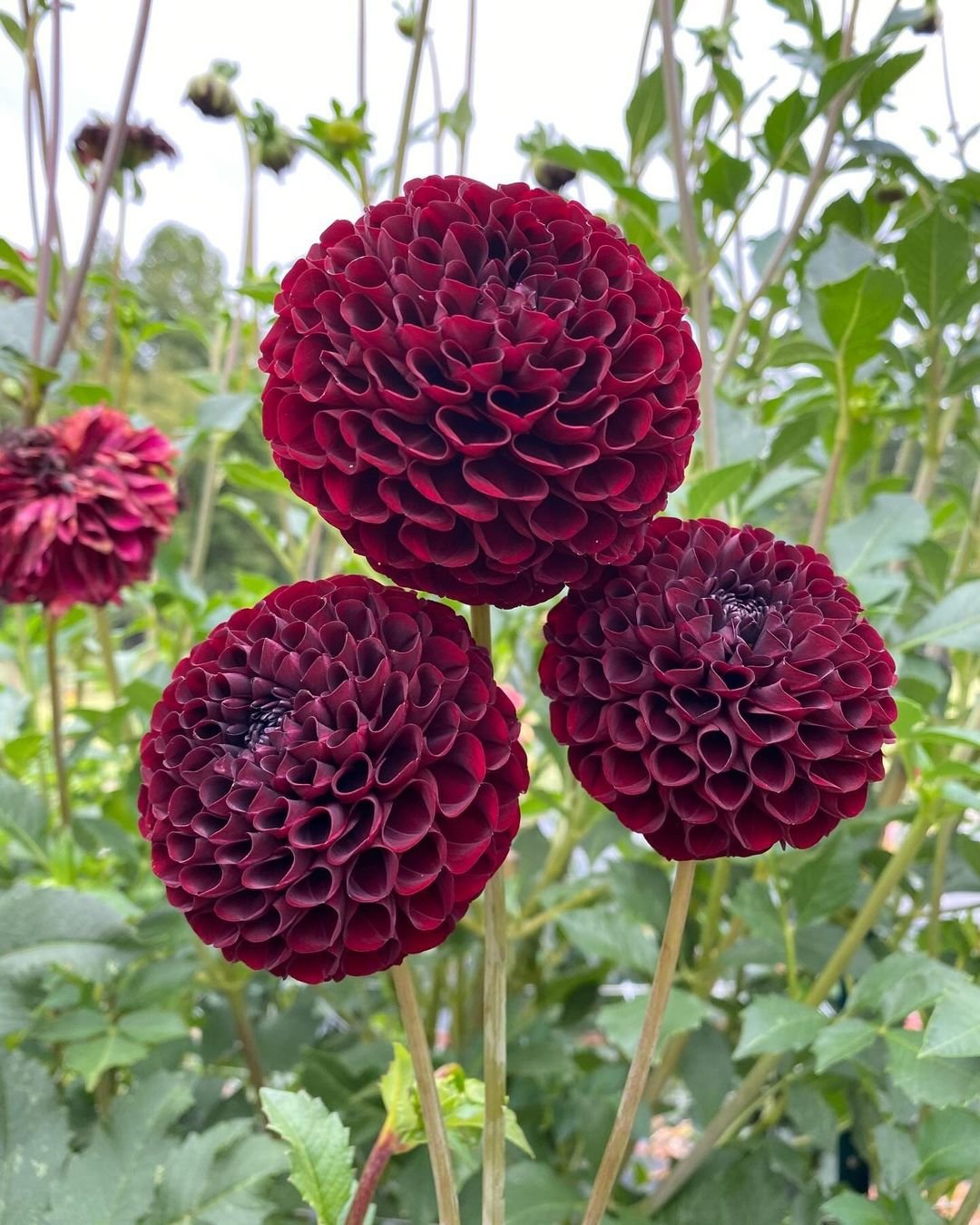
It appears that “Fagelia” might be a less common or variant name. However, based on available information, here’s a general chart that might align with what you’re looking for:
| Attribute | Details |
|---|---|
| Botanical Name | Fagelia hirsuta (possibly) |
| Common Name | Not widely recognized |
| Plant Zone | Specific zone information not widely available |
| Sun Exposure | Full Sun to Partial Shade |
| Soil Type | Well-drained soil |
| Watering | Moderate |
| Growth Habit | Herbaceous |
| Height/Spread | Specific height and spread not widely documented |
| Special Features | Limited information available |
Fagelia or Climbing Fuchsia, has tubular flowers similar to regular fuchsias, but it’s a climbing plant.
How to grow:
- Plant in partial shade
- Provide support for climbing
- Keep soil consistently moist
Climbing Fuchsia is great for covering fences or trellises in mild climates. It blooms for a long time and attracts hummingbirds.
Wrapping Up
There you have it – 20 fantastic flowers that start with F! From the fragrant Freesia to the climbing Fagelia, these plants offer a wide range of colors, sizes and growing needs. Whether you have a sunny garden, a shady spot or just a few pots on a balcony, there’s an ‘F’ flower for you.
Remember, gardening is about experimenting and learning. Don’t be afraid to try new plants. You might discover a new favorite! Happy gardening and enjoy your beautiful ‘F’ flowers!

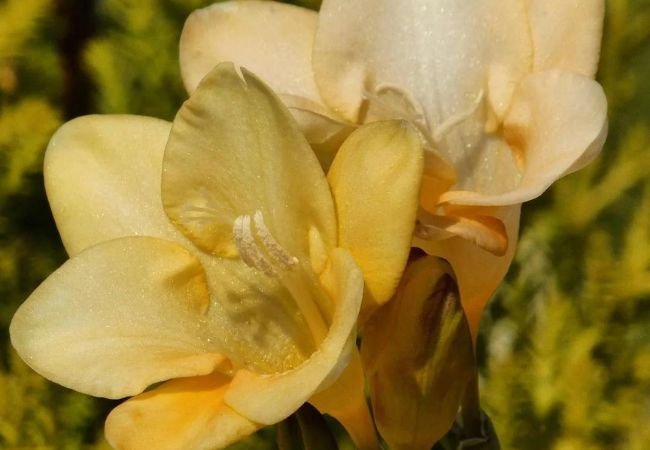






Leave a Reply